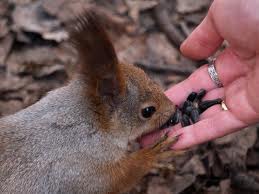77 posts
• Page 3 of 4 • 1, 2, 3, 4
Tree LOD BTT files – Finding a solution to wall of trees 32
-

BrEezy Baby - Posts: 3478
- Joined: Sun Mar 11, 2007 4:22 am
-

Isabella X - Posts: 3373
- Joined: Sat Dec 02, 2006 3:44 am
I believe this conspiracy theory has been brought up before no? The CS had bugs, the Morrowind and aoblivion versions. Honestly, if they feared mod "competition" they could just, you know, NOT RELEASE the CK. Plus, many landscape mods for Oblivion wound up requiring dlc content. The argument that they "hamstringed" the CK is a rather flimsy one to be honest.
-

Mizz.Jayy - Posts: 3483
- Joined: Sat Mar 03, 2007 5:56 pm
Indeed im really tempted so much to include all dlcs for my mod lol .... For building things ( hearthfire) huskies and crossbows ( dawnguard ) spears and dragonriding as well as lot new creatures and stalhrim (dragonborn)
-

Chloe Yarnall - Posts: 3461
- Joined: Sun Oct 08, 2006 3:26 am
While I don't want to read too much into that, it is great that somebody has at least started looking into creating a custom generator. Best of luck to him. /smile.png' class='bbc_emoticon' alt=':)' />
-

BlackaneseB - Posts: 3431
- Joined: Sat Sep 23, 2006 1:21 am
is there any news on this? /smile.png' class='bbc_emoticon' alt=':smile:' />
-

Megan Stabler - Posts: 3420
- Joined: Mon Sep 18, 2006 2:03 pm
I was working on some tree-related stuff, figured I'd post a template for 010 Editor.
This is all based off the info in the first page or two. It all seems to check out so far. Doesn't really help with fixing this exact issue, but will let people edit their BTT files easily.
Edit:
Here are my notes on the tree type IDs:
Edit2:
I am pretty certain the two unknowns are the Version Control 1 and 2, which I believe are a datetime stamp and a user ID respectively. It doesn't seem to be UNIX, because most of the dates are between 2004 and 2006, which obviously doesn't make any sense. I would guess it is 5 years off for whatever reason.
Also, the BTT files BSA do not seem to be the exact same as those in the BSA. For instance I found at least one missing FormID, and the Version Control Info 2 does not always match up with that in the BTT file. This can also explain why it is always 0000 when generated by the CK, as it has VC disabled. I'm not going to dare trying to enable it to see if the value changes... There's not even a promise that it would since the VC they've given us is only half of what they actually work with.
The last unknown, that varies drastically, I have no idea what it could be.
See post below.
struct FILE { struct HEADER { int numTypes; } header ; struct TYPE { int treeType; int numOfTrees; struct TREE { float xCoord; float yCoord; float zCoord; int unknown1; float scale; int formID ; int unknown2; int unknown3; } trees[numOfTrees]; } types[ file.header.numTypes ] ;} file; This is all based off the info in the first page or two. It all seems to check out so far. Doesn't really help with fixing this exact issue, but will let people edit their BTT files easily.
Edit:
Here are my notes on the tree type IDs:
Spoiler
0: TreePineForestSnowL051: TreePineForestSnowL032: TreePineForestSnowL023: TreePineForestSnowL044: TreePineForestSnow035: TreePineForestSnow026: TreePineForestSnow057: TreePineForestSnow048: TreePineForest049: TreePineForest0310: TreePineForest0511: TreePineForest0212: TreePineForest03Dead13: TreePineForest05Dead14: TreePineForest02Dead15: TreePineForestSnow03Dead16: TreePineForestSnow0118: TreePineForestSnow04Dead20: TreePineForestSnowL0123: TreePineForest04Dead24: TreePineForest0126: TreePineForestSnow05Dead28: TreePineForest01Dead29: TreeAspen0530: TreeAspen0131: TreeAspen0632: TreeAspen0233: TreeAspen03TreeAspen01 = 30TreeAspen02 = 32TreeAspen03 = 33TreeAspen05 = 29TreeAspen06 = 31TreePineForest01 = 24TreePineForest01Dead = 28TreePineForest02 = 11TreePineForest02Dead = 14TreePineForest03 = 9TreePineForest03Dead = 12TreePineForest04 = 8TreePineForest04Dead = 23TreePineForest05 = 10TreePineForest05Dead = 13TreePineForestSnow01 = 16TreePineForestSnow02 = 5TreePineForestSnow03 = 4TreePineForestSnow03Dead = 15TreePineForestSnow04 = 7TreePineForestSnow04Dead = 18TreePineForestSnow05 = 6TreePineForestSnow05Dead = 26TreePineForestSnowL01 = 20TreePineForestSnowL02 = 2TreePineForestSnowL03 = 1TreePineForestSnowL04 = 3TreePineForestSnowL05 = 0Unaccounted for:1719212225TreePineForestSnow02DeadTreePineForestSnowL01DeadTreePineForestSnowL02DeadTreePineForestSnowL03DeadTreePineForestSnowL04DeadTreePineForestSnowL05DeadNot in any BTT files:TreeReachCliffTree01 (No LOD flat NIFs, therefore no LOD generated)TreeReachCliffTree02 (No LOD flat NIFs, therefore no LOD generated)TreeReachTree01 (No LOD flat NIFs, therefore no LOD generated)TreeReachTree02 (No LOD flat NIFs, therefore no LOD generated)TreeAspen04 (No LOD flat NIFs, therefore no LOD generated)TreePineForestSnow01Dead (Only occurs once, in an interior)
Edit2:
Also, the BTT files BSA do not seem to be the exact same as those in the BSA. For instance I found at least one missing FormID, and the Version Control Info 2 does not always match up with that in the BTT file. This can also explain why it is always 0000 when generated by the CK, as it has VC disabled. I'm not going to dare trying to enable it to see if the value changes... There's not even a promise that it would since the VC they've given us is only half of what they actually work with.
The last unknown, that varies drastically, I have no idea what it could be.
See post below.
-

xemmybx - Posts: 3372
- Joined: Thu Jun 22, 2006 2:01 pm
I wouldn't bother messing with the VC timestamp. Since this is a file that can't even be directly edited in the CK, there is really no need for the date to be right, as it can't throw up any VC related errors about it. And really, the only VC stuff that I know we're missing is the Perforce integration for script syncing.
Great to hear that some progress is being made, though! /smile.png' class='bbc_emoticon' alt=':)' />
-

Ron - Posts: 3408
- Joined: Tue Jan 16, 2007 4:34 am
Spoiler
Disregard the timestamp hunch. I think it was mere coincidence.
What seems highly more likely is that it is rotation data, randomized between 0 and 2π (radians). I haven't seen a single value above 2π. Furthermore, the rotation for the LOD is different between the BTTs stored in the BSA and the BTTs generated by the CK. (http://imgur.com/a/Hhacn) It also changes with each generation. The next step would be to see if setting all the trees to 0 or 2π results in the same exact rotation. Obviously this seems to be a logical move by Bethesda, to not bother storing all rotation axes, and also to make sure the trees are not all facing the same way.
There is also a logical order in which the trees are generated in the file, based off of a combination of cell, tree type and form ID.
Edit: The tree type data I posted above may be specific to each generation. It seems that the information is stored in Tamriel.LST.
Edit2: It is definitely the case that Tamriel.LST stores a list of the tree types. However, it can change in order and size if you change which tree NIFs have lod_flat versions. For example, I made the LOD NIFs for the Reach trees that are all missing, and 4 new values appear in the LST file. I have the structure correct, but haven't decoded the juicy data. It is 24 bytes in length, so I assume it is merely an Editor ID or filename. None of the bytes are a FormID. If I knew something about how Skyrim stored this type of data I would have probably already figured it out by now.
Sometime today I may run over all the assumed rotation values, look at their distribution and verify they are clamped at 0 to 2π.
Disregard the timestamp hunch. I think it was mere coincidence.
What seems highly more likely is that it is rotation data, randomized between 0 and 2π (radians). I haven't seen a single value above 2π. Furthermore, the rotation for the LOD is different between the BTTs stored in the BSA and the BTTs generated by the CK. (http://imgur.com/a/Hhacn) It also changes with each generation. The next step would be to see if setting all the trees to 0 or 2π results in the same exact rotation. Obviously this seems to be a logical move by Bethesda, to not bother storing all rotation axes, and also to make sure the trees are not all facing the same way.
There is also a logical order in which the trees are generated in the file, based off of a combination of cell, tree type and form ID.
Edit: The tree type data I posted above may be specific to each generation. It seems that the information is stored in Tamriel.LST.
Edit2: It is definitely the case that Tamriel.LST stores a list of the tree types. However, it can change in order and size if you change which tree NIFs have lod_flat versions. For example, I made the LOD NIFs for the Reach trees that are all missing, and 4 new values appear in the LST file. I have the structure correct, but haven't decoded the juicy data. It is 24 bytes in length, so I assume it is merely an Editor ID or filename. None of the bytes are a FormID. If I knew something about how Skyrim stored this type of data I would have probably already figured it out by now.
Sometime today I may run over all the assumed rotation values, look at their distribution and verify they are clamped at 0 to 2π.
See below!!
-

Bedford White - Posts: 3307
- Joined: Tue Jun 12, 2007 2:09 am
This has been fixed, but requires an unreleased dev version of TES5Edit. I will update this thread again when it is out. Thanks goes to Zilav, who created a binary file patcher for the BTT files. The BTT files still need to be generated by the CK, so you must load your plugin(s) and generate the worldspace. Then run the BTT patcher from inside TES5Edit.
I can confirm visually that it works: http://imgur.com/a/tzEpG
As well as the fact that values of +/-131008 no longer exist in any of the patched BTT files. (The value the coords got clamped at)
I can confirm visually that it works: http://imgur.com/a/tzEpG
As well as the fact that values of +/-131008 no longer exist in any of the patched BTT files. (The value the coords got clamped at)
-

Silvia Gil - Posts: 3433
- Joined: Mon Nov 20, 2006 9:31 pm
This is fantastic news /biggrin.png' class='bbc_emoticon' alt=':biggrin:' />
And thank you jonwd7 for all the work you have done with deciphering the BTT files.
-

Andres Lechuga - Posts: 3406
- Joined: Sun Aug 12, 2007 8:47 pm
Big thanks to everybody that helped get this up and running! You guys rock!
Can't wait until the release. /biggrin.png' class='bbc_emoticon' alt=':D' />
Can't wait until the release. /biggrin.png' class='bbc_emoticon' alt=':D' />
-

Kayleigh Williams - Posts: 3397
- Joined: Wed Aug 23, 2006 10:41 am
This is best news since release of the CK !! Thank you very much indeed !! Great work !!
-

Emma-Jane Merrin - Posts: 3477
- Joined: Fri Aug 08, 2008 1:52 am
Great work /biggrin.png' class='bbc_emoticon' alt=':D' /> Sorry I wasn't of more help, folks. Here's hoping I can make up for it when I start working on the CKE /tongue.png' class='bbc_emoticon' alt=':P' />
-

GabiiE Liiziiouz - Posts: 3360
- Joined: Mon Jan 22, 2007 3:20 am
I'm so excited for the CKE. Do you have an estimate on when you'd like to release the first version?
-

Matthew Aaron Evans - Posts: 3361
- Joined: Wed Jul 25, 2007 2:59 am
My guess is he will not start on it until Beth has stopped patching the game and the CK.
-

noa zarfati - Posts: 3410
- Joined: Sun Apr 15, 2007 5:54 am
Ah, that certainly makes sense. Something that I'm excited for (even though it's purely asthetic) is the visual style integration. It made the CS feel so much more modern, and since I've always been a big Windows customizer, I'll certainly enjoy seeing custom visual styles feel more at home in the CK. /tongue.png' class='bbc_emoticon' alt=':P' />
-

Averielle Garcia - Posts: 3491
- Joined: Fri Aug 24, 2007 3:41 pm
In some code you previously posted, it seems the tree types are in some sort of enumerable? What does this mean for totally new tree types and generating LOD for them?
-

Chris Cross Cabaret Man - Posts: 3301
- Joined: Tue Jun 19, 2007 11:33 pm
The CK adds them to an index in a LST file. Anything that is considered a TREE record can have an *_lod_flat.nif. The index in the LST is the "type ID" in the BTT file. The LOD flat nifs are easy to make, just by copying an existing one, scaling it to the width and height of the full-res tree, and then modifying the UV data of the flat NIF. This could all be done in NifSkope if necessary, but importing and exporting between Max is probably easier. If you are using all new trees you will need to create the treelod.dds atlas in textures\terrain\\trees , or if you are adding existing you need to expand the existing tamrieltreelod.dds by doubling its height and width, sticking the existing atlas in one quadrant, and you now have 3/4ths of a blank atlas to use. You will need to edit the UV data for all 34 vanilla tree LODs however.
If that sounds like a lot of work, I guess it is... I am actually overhauling the LOD atlas as we speak, with more of the vanilla tree types, including shrubs, grass etc. I'm starting with the highest ref counts and working my way down. The LOD is much improved already. I will be releasing this as a mod / modder's resource eventually, though other modders will have to work together to use the same common LOD atlas, if they want to share new tree types. If it's for a specific worldspace, then any risk of collisions is not an issue since each worldspace can have its own tree atlas.
To actually take pictures of the new trees, you can re-render them in high quality in Max. For example here is my re-rendered Aspen atlas (which are TRULY awful looking in vanilla):
http://imgur.com/a/Fecsj#0
If that sounds like a lot of work, I guess it is... I am actually overhauling the LOD atlas as we speak, with more of the vanilla tree types, including shrubs, grass etc. I'm starting with the highest ref counts and working my way down. The LOD is much improved already. I will be releasing this as a mod / modder's resource eventually, though other modders will have to work together to use the same common LOD atlas, if they want to share new tree types. If it's for a specific worldspace, then any risk of collisions is not an issue since each worldspace can have its own tree atlas.
To actually take pictures of the new trees, you can re-render them in high quality in Max. For example here is my re-rendered Aspen atlas (which are TRULY awful looking in vanilla):
http://imgur.com/a/Fecsj#0
-

Motionsharp - Posts: 3437
- Joined: Sun Aug 06, 2006 1:33 am
Great looking aspen LOD, way better than the totally off-color LOD that is present in vanilla Skyrim.
-

Alan Cutler - Posts: 3163
- Joined: Sun Jul 01, 2007 9:59 am
So the Tes5edit Version with the .btt patcher is released now ..
-

Amanda savory - Posts: 3332
- Joined: Mon Nov 27, 2006 10:37 am
After a quick test... This is actually working !!!!
This is so great!
This is so great!
-

Andrew Perry - Posts: 3505
- Joined: Sat Jul 07, 2007 5:40 am
Good to hear! Many thanks to Zilav. He did all the actual work. I just did the pushing. /smile.png' class='bbc_emoticon' alt=':)' />
-

GabiiE Liiziiouz - Posts: 3360
- Joined: Mon Jan 22, 2007 3:20 am
77 posts
• Page 3 of 4 • 1, 2, 3, 4
